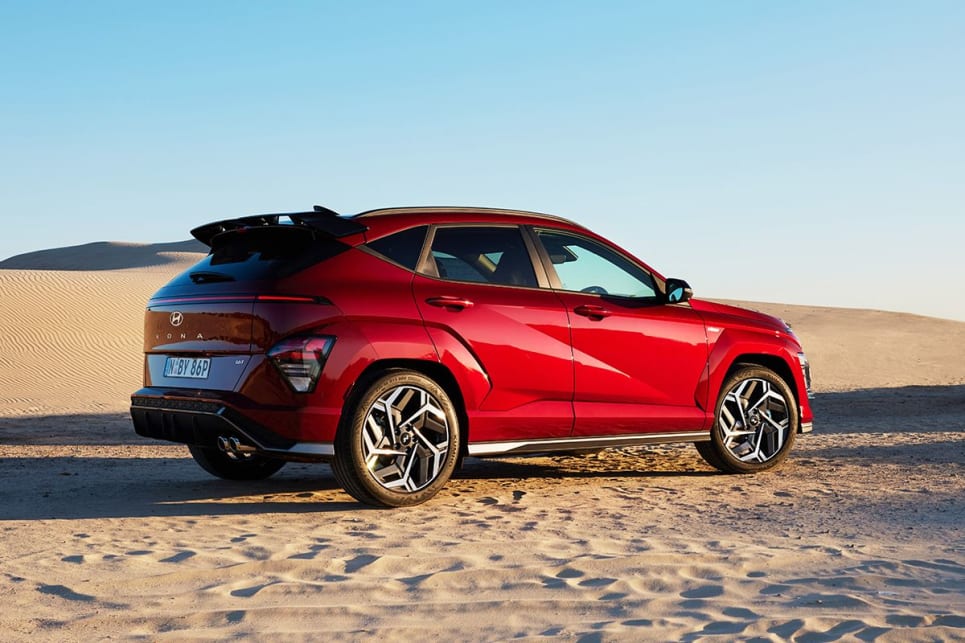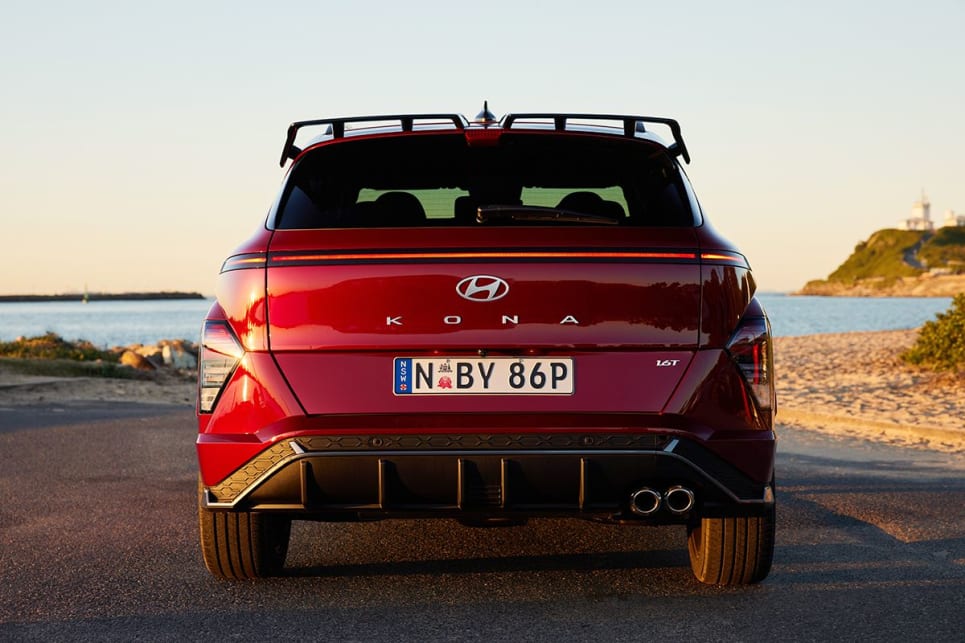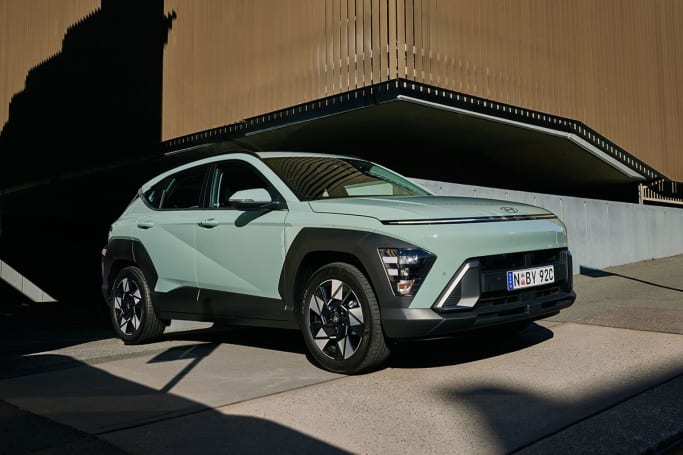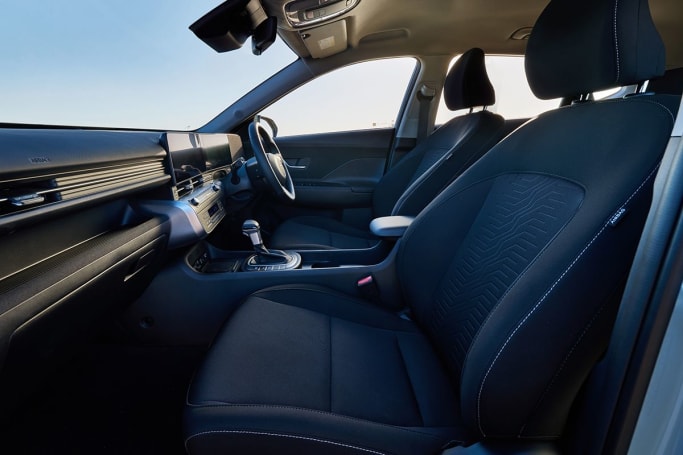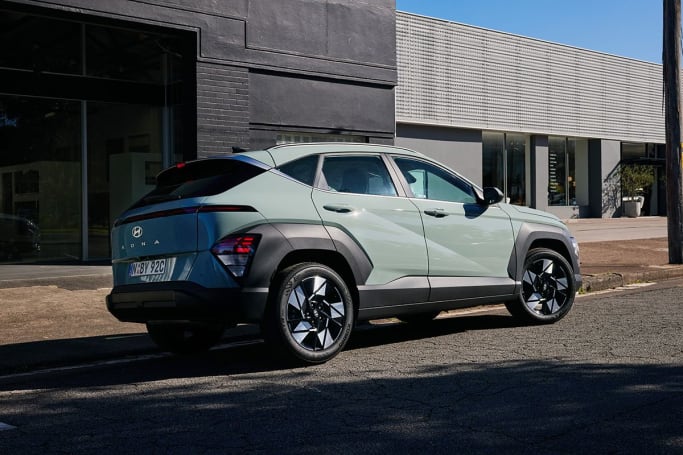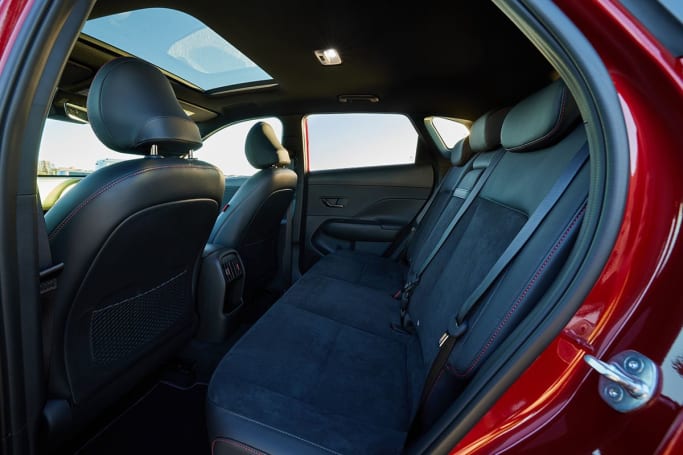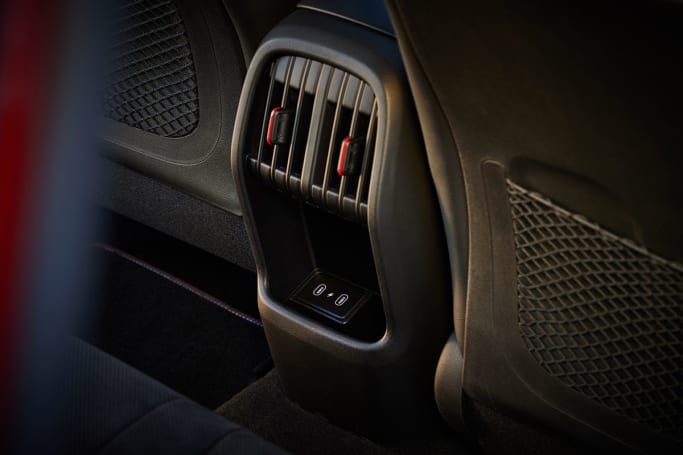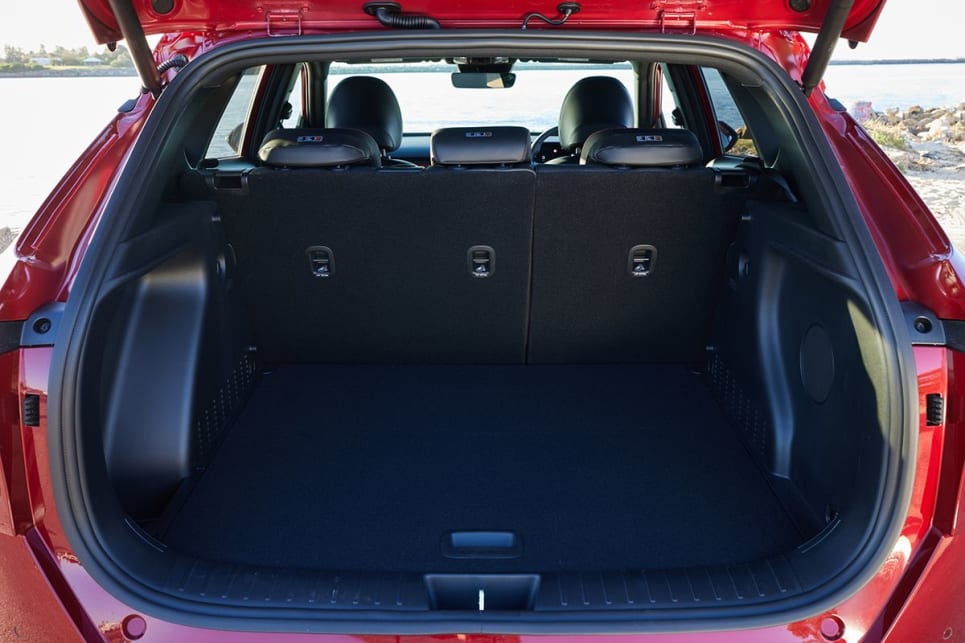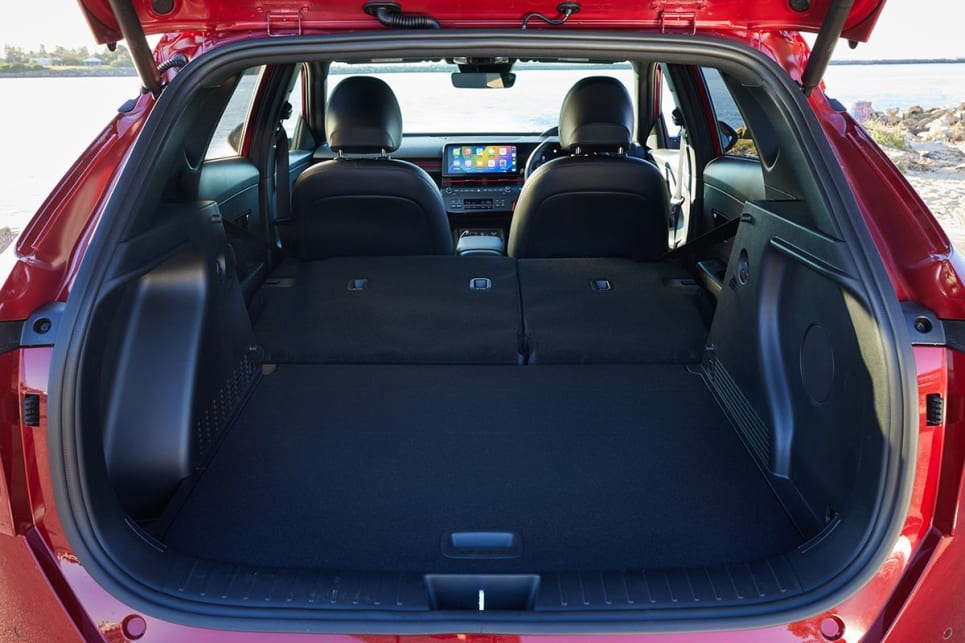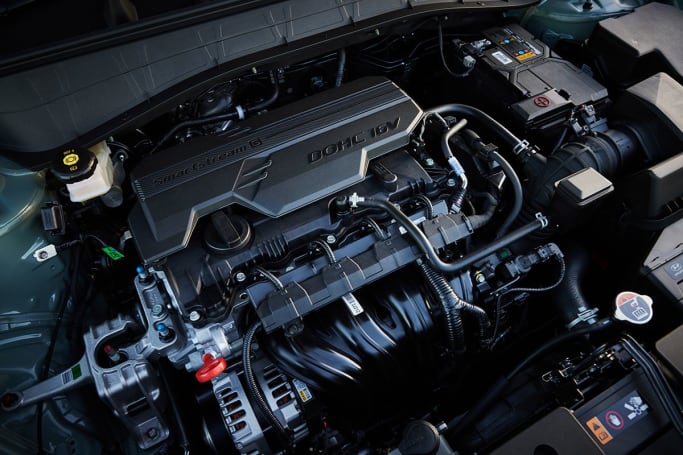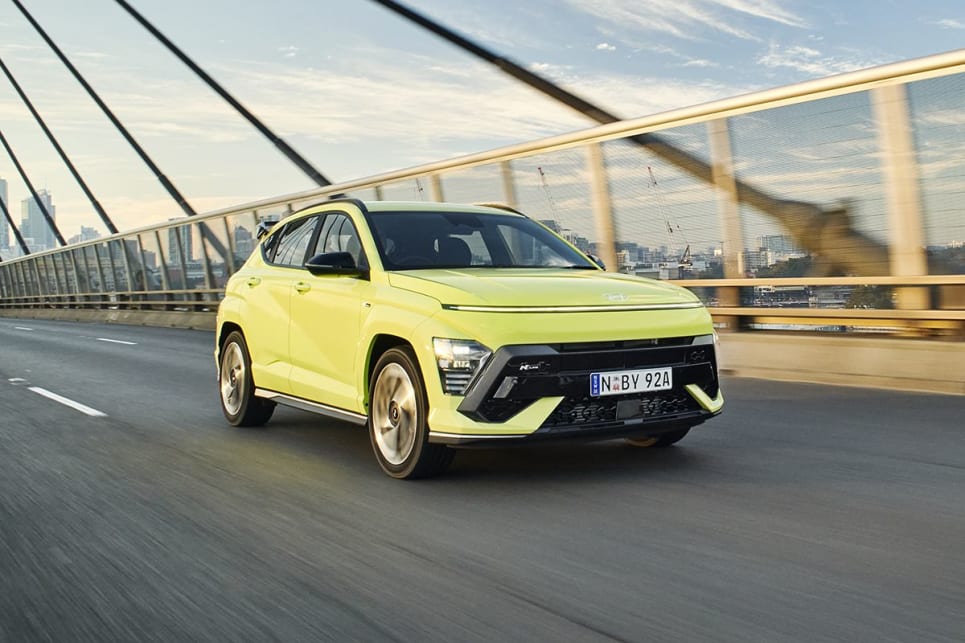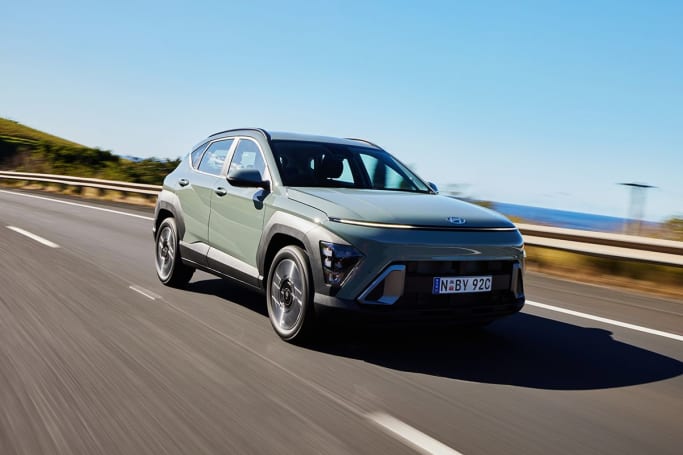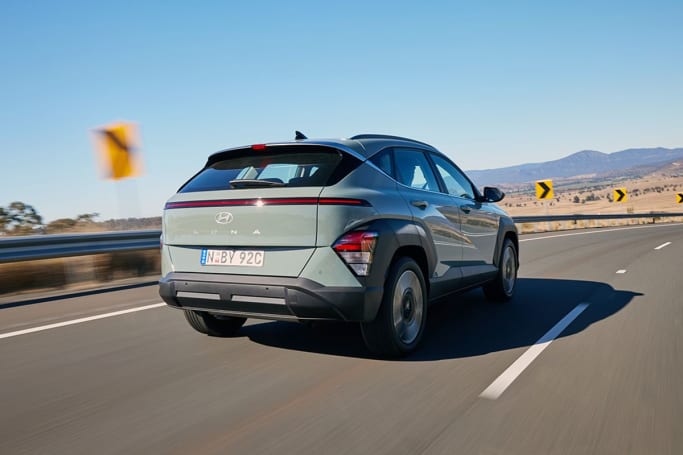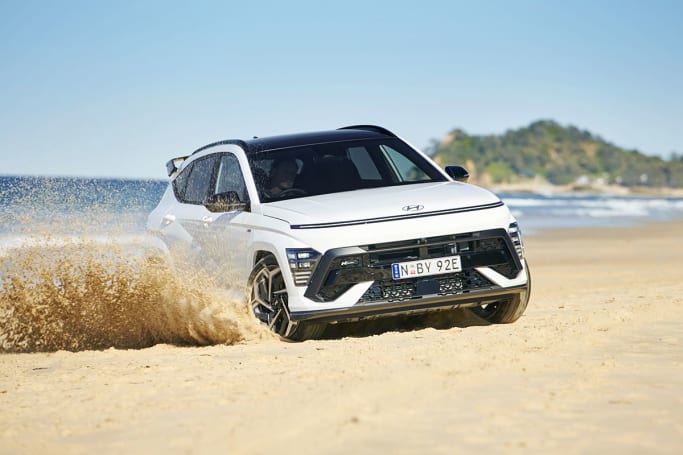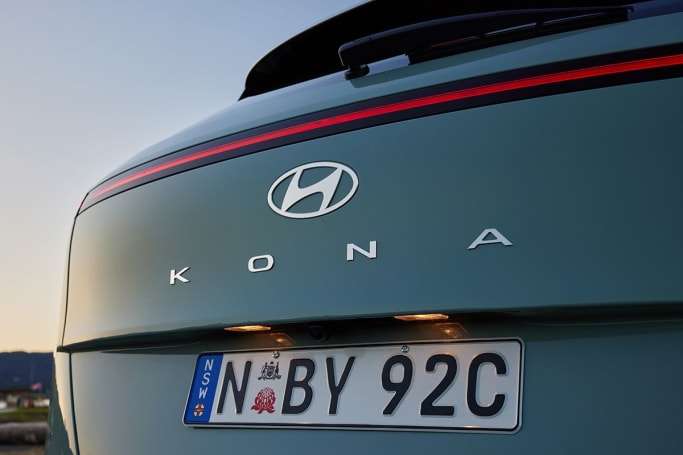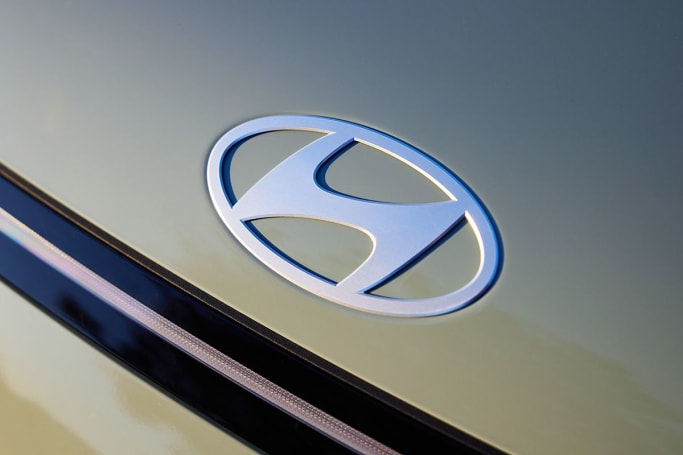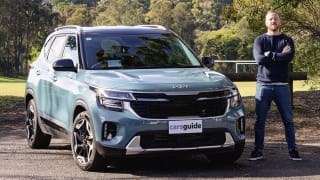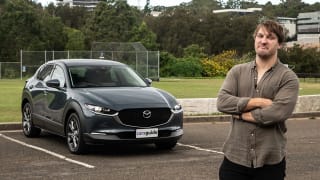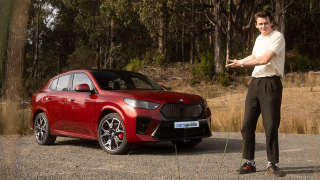The new Kona is longer, wider and higher, with a bigger wheelbase than its predecessor, and while its footprint has grown the car’s striking design is destined to stand it apart.
Hyundai’s slim-line LED ‘Horizon’ positioning light at the front, already seen in the Staria, is a big point of difference and the absence of a conventional grille reinforces the car’s EV-led design.
Chunky guards define the wheel arches front and rear while a complex combination of character lines effectively forms a Z-shape along the side of the car.
Worth noting this kind of surfacing is usually confined to premium models because it’s so hard (and more costly) to get the panel shutlines right.
The rear carries over the futuristic look with a single light band across the car’s width and tail-light clusters embedded in the back of the angular rear wheel arches matching similar combination units in the front guards. They’re a reconfigured design echo of the outgoing model.
There’s a fair bit going on, even on the standard car, before the N Line versions add extra body-coloured cladding, unique 19-inch rims, an unusual ‘split’ roof spoiler and other specific exterior elements.
Inside, the look is clean and geometric with a two-level dash treatment dominated by the sizeable central multimedia screen, with twin displays creating a sleek, driver-focused digital band across more than half the car’s width.
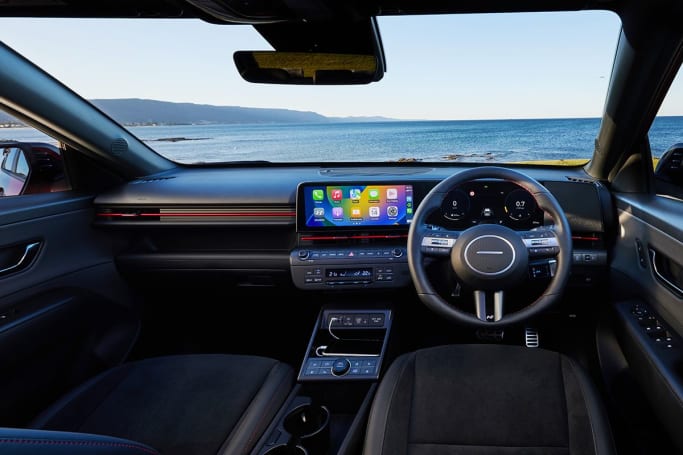
On all 1.6-litre Turbo models and Kona Premium grades a shift-by-wire gear selector has been relocated from the centre console to a stalk behind the steering wheel, a la Ioniq 6 freeing up space in the centre console, which we’ll get to when looking at practicality, shortly.
As well as a more aggressive exterior the N Line Pack adds a sporty vibe inside with dark brushed alloy-effect elements around the cabin as well as gloss red inserts, red highlights and contrast stitching on the Alcantara and leather-trimmed seats, plus alloy pedal covers and perforated leather grips on the steering wheel.
Three exterior colours - ‘Cyber Grey’, ‘Neoteric Yellow’ and ‘Soultronic Orange’ are N Line exclusive.






